#european honeybee
Text

And when the party's over?
European honeybee in pollination mode
#original photographers#nature photography#wildlife photography#macro photography#european honeybee#insect photographhy#Lawson
60 notes
·
View notes
Text

#photographers on flickr#photographers on tumblr#north america#nature#photography#European honeybee#garden photography#borage
2 notes
·
View notes
Text


2023/08/12 - an Eastern yellowjacket (Vespula maculifrons) and a European honeybee (Apis mellifera) sharing a flower for a moment.
0 notes
Text
For #WorldHoneyBeeDay 🐝 here are two golden illuminations from a pair of famous early 13th c. English bestiaries:
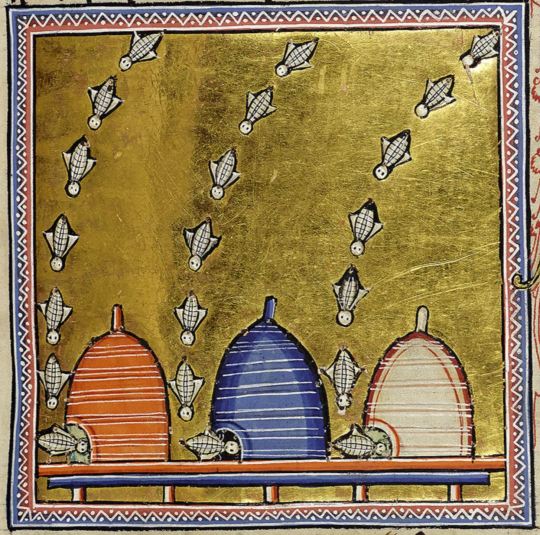
Aberdeen Bestiary, Univ. Lib. MS 24 f.63r
Aberdeen University Library
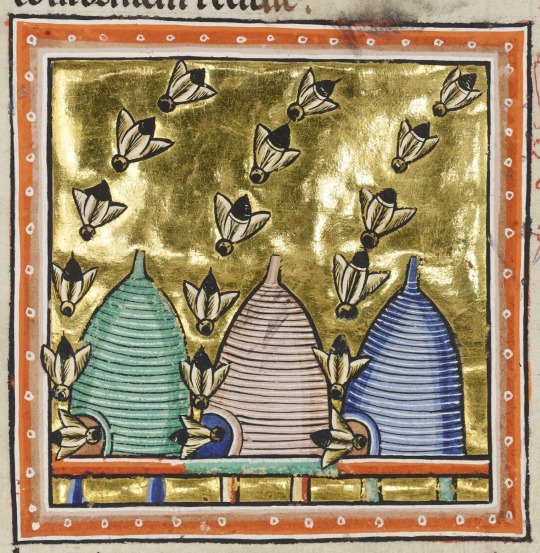
Ashmole Bestiary, MS Ashmole 1511 f.75v
Bodleian Libraries
#bee#bees#honeybee#honeybees#honey bee#honey bees#beehive#apiary#medieval art#English art#European art#bestiary#medieval manuscript#illuminated manuscript#illustration#gold leaf#Ashmole Bestiary#Aberdeen Bestiary#Bodleian Libraries#Aberdeen University Library#World Honey Bee Day#animal holiday#animals in art#book art
501 notes
·
View notes
Text

Sunny Honey Bee
A honey bee on a sunlit buddleja leaf.
#apis mellifera#bee#bees#canon#canonuk#european honey bee#fauna#garden#honey bee#honeybee#insect#insects#invertebrate#invertebrates#minibeast#minibeasts#nature#outdoors#spring#wildlife
110 notes
·
View notes
Note
Can you tell us more about Blizzardwing and Holly's toxic marriage?
Sure! I'll leave the meta reasons for why I feel so strongly about the changes out of this, and just focus on the new HollyBlizzard dynamic
There is brief periods of peace in their mateship, but they're increasingly rare.
Sometimes it seems like Hollyflower is looking for reasons to take out her frustration on Blizzardwing. You can 'feel' it coming.
The kits quickly learn when things are about to get loud, and begin walking on eggshells around their parents
But, there's always a spark that sets off chaos.
Blackkit often feels like it's his fault. He'll do something 'wrong', and then Blizzard is paying for it, and as a result Blizzard makes him pay for it back.
Black dreads Blizzard's visits to the nursery, he wishes they would just stay apart because he can "handle" Holly on her own.
Flintfang and Fernshade were in the older litter, with Blackfoot slightly younger. About one year apart or so.
They were always huge reliefs to him. They would often show up just in time and whisk him away to do fun activities. They showed him how to hunt frogs. They taught him how to skin a vole. Blizzard and Holly would have left him without basic skills otherwise.
But at the end of the day, he would have to go back to the nursery.
Flint and Fern know what it's like growing up in that kind of environment, but at least they had each other you know?
Never, NEVER suggest to Holly or Blizzard that maybe they shouldn't be together. They will unite just to turn their anger onto you.
Blizzard: "She's my mate. I made a promise that I'd always be there for her. You think I'd just play a game with her love? Are you trying to tell me I'm not loyal?"
Holly: "Yeah sure we fight, but that's because I love him. I've never loved anyone else and I never will, how dare you try to drive a wedge between us!"
We're Drowning Together
Coming out of that environment, Blackfoot was a bit of a bully. He wanted to prove his worth to ShadowClan, and sometimes lashed out just to throw his weight around. He was a big boy that came out of the union of The Vicious Hollyflower and Son/Grandson-of-Snowtuft Blizzardwing, and that made a lot of people afraid of him.
That desperation, loneliness, and sadistic streak made him a favorite of the deputy Brokentail, who soon became Brokenstar. He wasn't his first deputy; but it was clear that Brokenstar was preparing him for the role by providing him lots and lots of opportunities for advancement at a young age.
But, I'm getting ahead of myself. The Holly/Blizzard dynamic has been OVERHAULED for BB.
#better bones au#I wake up in the morning with an insatiable lust for beefing up all the potential abusive dynamics in battle cats#I carve a path through canon like a japanese giant hornet in a european honeybee nest#tw domestic abuse#tw child abuse#I'm earning those tw tags#BB!Blackstar
61 notes
·
View notes
Text
every european in chat fighting for their life against phils UK/european bee misinformation (help my streamer thinks theres only one kind of bee in the uk)
#tsu talks#philza#him @ the european honeybee in the usa: aww so this is the bumblees i see#king...... <3 but pensive
7 notes
·
View notes
Text
Having one of those weeks where I read an essay about swimming at a YMCA in New Jersey and my brain is like "which is RELATED TO BLEACH BECAUSE--" and then another about beekeeping "WHICH IS EVEN MORE RELATED TO BLEACH BECAUSE--"
#the beekeeping is legit though because i subscribe to the school of thought that shinigami are not necessary to the soul ecosystem#but they are necessary to the functioning of the soul systems they have created#similar to the ways european honeybees are not essential to NA ecosystems but are essential to the agriculture NA has staked its economy on#no brain just bleach#for posterity: other articles in my B3 notes--atomic clocks slime molds heat shock proteins learning how to surf moss geologic memory#i do feel like bleach is legitimately about all of those things though#the surfing one is just because i was thinking about reiryoku#'To surf is to ask a wave to let you join it and to get no response by the wave itself. it is not your partner your friend your compatriot#your competitor your doppelganger a mirror or your enemy. it is physics touched by human imagination.'#is the quote#and i was thinking about at what point the terms of engagement might change re: shikai and bankai
14 notes
·
View notes
Text
"save the bees" domesticated european honeybees don't need to be saved and aren't important to our environment, you should actually help our native bees, wasps, and butterflies by planting native wildflowers and stop building suburbs and shit. but that doesn't sell mass produced honey so we can't advocate that instead.
#unless the beekeeper is one that captures native bees and rehomes them in a safe hive they're not actually#like helping the environment#european honeybees are only really good at pollinating produce lol#hades.txt
3 notes
·
View notes
Text

Sticker sheet designed for my Patreon (hence watermarks). [Links]
#bugs#bug#snake#european viper#dandelion#botanical illustration#animal illustration#art#illustration#small artist#sticker design#black and white art#witch#goth#nature#bee#bees#honeybee
3 notes
·
View notes
Text
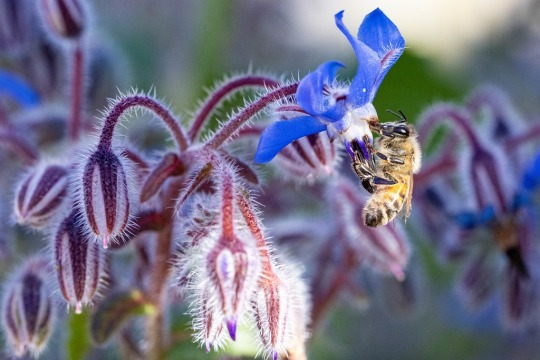
2 notes
·
View notes
Text
y’all…..dandelions are nonnative invasives in the usa……
#like i too am delighted by yellow and fuzzy wishes and wish the bees the best#and foraging them is excellent#but they are european and really only benefit the european honeybee and not native pollinators#idk i feel like i keep seeing more fields of dandelions and nothing else with no mow movements and that is also bad#clover talks
1 note
·
View note
Text
Follow me closely: honey bee waggle dances
Honey bees (Apis species) appear to be unique, in that they are the only social bees which can recruit other members of their hive to come and join them in foraging at a specific resource site, say a patch of flowers. Individual foragers are able to communicate the location, odour, and presence of high-quality food, or potential nest sites, to their nestmates. As explained below, they can…
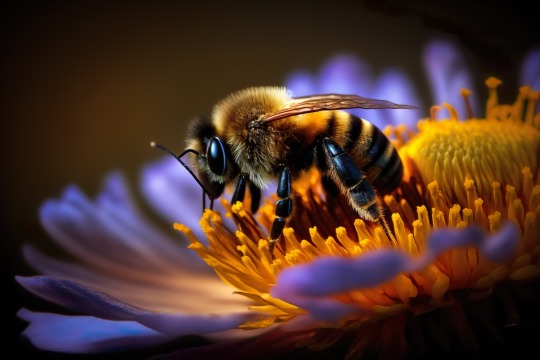
View On WordPress
#Apis#Apis mellifera#European honey bee#Honey bees#honeybee#insect communication#Karl von Frisch#round dance#waggle dance
1 note
·
View note
Text
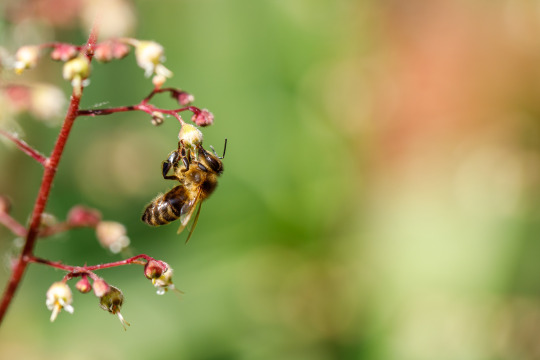
Feeding Honey Bee
A honey bee feeding on a heuchera flower, in the garden.
#30dayswild#apis mellifera#bee#bees#canon#canonuk#european honey bee#fauna#garden#honey bee#honey bees#honeybee#honeybees#insect#insects#invertebrate#invertebrates#minibeast#minibeasts#nature#outdoors#spring#springwatch#western honey bee#wildlife
22 notes
·
View notes
Text


Varroa mites are so cute and pretty, what a perfect little shape. Sucks for beekeepers and domestic european honeybees but I am neither of those things so I say Varroa can do whatever it wants
456 notes
·
View notes
Text


Extinction is always accompanied by unanswerable questions. Absence makes mysteries of the simplest details: the Passenger Pigeon's weight; the Dodo's tail; the diet of the Thylacine.
We know more about some species' cause of death than we do about the life that preceded it. When its last refuge was clearcut in the 1940's, the biggest question about the Ivory-Billed Woodpecker’s disappearance was whether it was, in fact, gone. But another mystery nagged from the depths of the swamp.
Like the Ivory-Bill, the stronghold of the Carolina Parakeet had been old-growth wetland forest—rich with cypress nuts too hard for other birds to crack, and plentiful places to roost and rear young. Though extirpated elsewhere by hunting & the pet trade, the bird should likewise have been expected to persist in the wildness of the Southern swamps. Yet the common parakeets vanished 40 years sooner than did the woodpecker.
A cavity-nester, the Carolina Parakeet made its home not among tree branches, but inside their dead, hollow trunks. The Ivory-Bill was able to drill itself a new nest each year, but a beak made for cracking cypress shells was useless at excavating solid wood, and parakeets were dependent upon whatever hand-me-down hollows they were able to find.
There are other species that live in secondhand nests. And the fingerprints of human influence can be found far beyond the reach of a physical hand.
The honeybee was brought to North America in 1622, and the European imports quickly set off on their own New World conquest, heralds of the incoming tide. In less than 200 years, they were established throughout the lands east of the Mississippi River. Most often, feral swarms would build their buzzing homes inside of hollow trees.
There's no way to know for sure how large a part the European Honeybee played in the loss of the Carolina Parakeet. But we do know that swarming honeybees have been documented stealing nests from the vulnerable ‘Ua'u bird of Hawaii, leaving limp bodies welted with stings beneath their feathers.
We know, too, the impact that our current honeybee-centric system of agriculture has upon the 4000+ species of bee native to North America, 1 in 4 of which is threatened with extinction. Wild bees require diverse diets and habitat to thrive; they struggle to survive amid our sprawling, bug-sprayed monoculture, much less meet the demands of its pollination.
Without the honeybee, it’s often said, our industrialized foodchain would collapse. But, maybe it isn't too late to find ways to prevent everything else from crumbling at our expense.
The title of this painting is 'The Colonizers'. It is gouache on 18x24" paper, and is #6 in my series about the Carolina Parakeet.
1K notes
·
View notes

